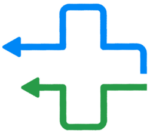Herniated Discs
Department of Herniated Discs
A herniated disk is an injury of the spine (backbone). You have a series of bones (vertebrae) in your spine, stretching from the base of your skull to your tailbone. Between your vertebrae are round cushions called disks. The disks act as buffers between your bones, allowing you to bend and move with ease. When one of these disks tears or leaks, it’s called a herniated disk.
Every year, up to 2% of people get a herniated disk. Herniated disks are a leading cause of neck and/or arm, and back and/or leg pain (sciatica). They can happen anywhere along the spine, but herniated disks most often occur in the lower back or the neck. It’s rare for a herniated disk to be in the mid-back.
People ages 30 to 50 are most likely to get a herniated disk. The problem affects men twice as often as women.
Types
1.Lumbar Herniated Disc: Occurs in the lower back and can cause sciatica, with pain radiating down the leg.
2.Cervical Herniated Disc: Affects the neck region and may lead to pain, tingling, or weakness in the arms.
Diagnosis
1.Clinical Evaluation: Assessment of symptoms like back pain, leg pain, numbness, or weakness.
2.Imaging Studies: MRI or CT scans to visualize the spine and identify the location and extent of disc herniation.
Treatment
1.Conservative Management: Rest, physical therapy, and pain medications are often prescribed for mild cases.
2.Epidural Steroid Injections: Injections of anti-inflammatory medications into the spine to reduce pain and inflammation.
3.Surgery (Discectomy): For severe cases, surgical removal of the herniated portion of the disc to alleviate pressure on nerves.
Herniated Discs Overview
- Surgery Time - 8 hours
- Stay in the country - 3 days
- Rehabilitation - 30days
- Best price - 1800$
- Surgery Time - 8 hours
- Stay in the country - 3 days
- Rehabilitation - 30days
- Best price - 1800$
- Surgery Time - 8 hours
- Rehabilitation - 30days
- Best price - 1800$
- Best price - 1800$
- Surgery Time - 8 hours
- Stay in the country - 3 days
- Rehabilitation - 30days
- Best price - 1800$
- Surgery Time - 8 hours
- Rehabilitation - 30days
- Rehabilitation - 30days
- Best price - 1800$
- Surgery Time - 8 hours
- Stay in the country - 3 days
- Rehabilitation - 30days
- Rehabilitation - 30days
- Surgery Time - 8 hours
- Surgery Time - 8 hours
- Rehabilitation - 30days
- Best price - 1800$

